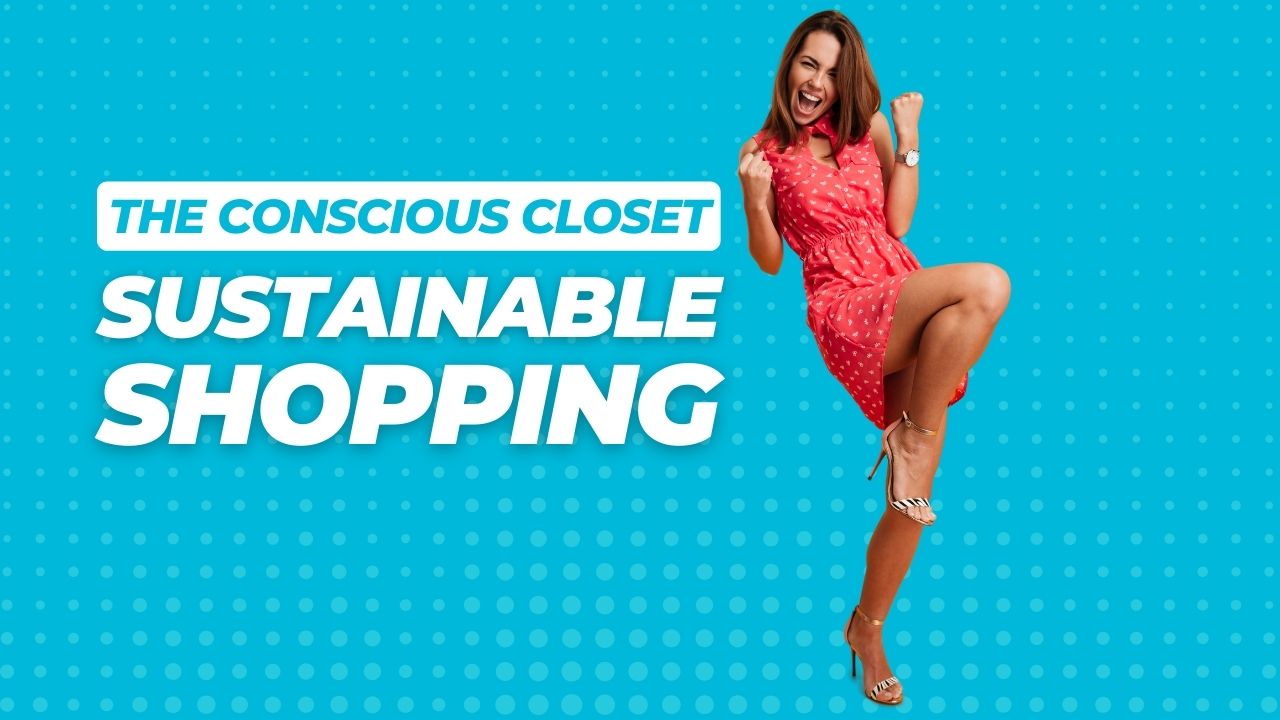Imagine the chaos of a typical wardrobe during a sale season frenzy—clothes piled high, hastily stitched from questionable materials, often discarded after a few wears. Now, picture the serene, purposeful atmosphere of a consciously curated closet: each piece thoughtfully chosen, promising not just longevity but also a testament to ethical craftsmanship. The contrast couldn’t be more striking.
In an era where the impacts of climate change are increasingly palpable, the concept of a ‘conscious closet’ is gaining traction. This approach to fashion isn’t just about minimising one’s environmental footprint; it’s about making deliberate choices that align with one’s ethical beliefs and aesthetic values. A conscious closet incorporates garments that support sustainable practices and ethical labour conditions, fostering a wardrobe that truly reflects one’s principles.
Curating a sustainable wardrobe from boutique finds transcends the mere act of shopping; it is a dynamic expression of eco-responsibility fused with personal style. This article explores how choosing sustainability through boutique shopping is not only better for the planet but also a powerful statement of individual style and values.
The Impact of Fashion on the Environment
Current Trends
The fashion industry is one of the major contributing sectors to global environmental degradation. It thrives on the fast fashion model—rapid production cycles pushing constant new collections, encouraging consumers to buy more and discard quickly. This relentless churn not only exhausts natural resources but also results in significant waste and pollution. From water-intensive cotton production to the release of untreated dyes into water bodies, the ecological footprint of this industry is profound. Moreover, the synthetic fibres used in much of fast fashion’s output, such as polyester, are petroleum-based, contributing to the depletion of non-renewable resources and environmental pollution from microfibres in oceans.
Statistics
To understand the magnitude of the issue, consider these statistics: The fashion industry is responsible for 10% of global carbon emissions—more than all international flights and maritime shipping combined. Additionally, it is the second-largest consumer of the world’s water supply. Each year, it produces an estimated 92 million tonnes of textile waste. A single polyester shirt has a carbon footprint of 5.5 kg CO2, almost double that of a cotton shirt. These numbers starkly illustrate the unsustainable nature of current fashion consumption patterns.
Personal Impact
Individual consumer choices have the power to influence this large-scale environmental impact significantly. By opting for sustainable and ethically made clothing, individuals can reduce their carbon footprint, decrease pollution, and conserve natural resources. For instance, choosing a garment made from organic cotton rather than conventional cotton can save over 2,000 litres of water. Supporting local and artisanal fashion reduces transportation emissions and often promotes better waste management practices. Moreover, by prioritising quality and longevity over quantity, consumers can lower the demand for fast fashion, thereby pushing brands to adopt more sustainable practices. Each conscious decision adds up, contributing to a larger movement towards a more sustainable fashion industry.
Defining a Conscious Closet
Definition
A ‘conscious closet’ refers to a thoughtfully curated wardrobe that prioritises sustainability, ethical production practices, and long-term value. It’s about choosing pieces that are not only stylish but are also made with respect for people and the planet. Sustainability in fashion involves using environmentally friendly materials and processes that minimise waste, pollution, and carbon footprint. Ethical production focuses on the humane treatment of workers, fair wages, safe working conditions, and transparency in the manufacturing process. Long-term value comes from investing in high-quality garments that are designed to last, rather than following fleeting trends. This approach advocates for a “buy less, choose well, make it last” philosophy, popularised by influential designers who oppose the fast fashion industry’s detrimental effects.
Benefits
Personal Benefits
- Quality over Quantity: A conscious closet means investing in well-made clothes that last longer, reducing the need for frequent replacements and saving money in the long run.
- Timeless Style: Sustainable wardrobes tend to focus on classic styles rather than trends, helping individuals develop a personal and timeless style.
- Health Benefits: Choosing organic and natural fabrics can reduce exposure to harmful chemicals and dyes often used in conventional clothing production.
Global Benefits
- Reduced Environmental Impact: By choosing sustainable and ethically made garments, one significantly reduces their environmental footprint. This includes less pollution, reduced water usage, and lower carbon emissions.
- Support for Fair Labor Practices: Purchasing from brands that prioritise ethical production helps promote fair labor conditions and human rights in the fashion industry.
- Promoting Biodiversity: Opting for organic and natural fibres supports agricultural practices that maintain soil health and biodiversity, unlike conventional farming which can be destructive to ecosystems.
A conscious closet not only reflects a commitment to living sustainably but also contributes to a broader positive impact on the world, aligning personal values with action. This approach not only enhances individual lives but also fosters a healthier planet and a more equitable society.
The Role of Sustainable Boutiques
Introduction to Boutiques
Sustainable boutiques represent a niche yet growing sector within the fashion industry, focusing on principles of sustainability and ethical production. Unlike mainstream fashion retailers that often prioritise volume and cost reduction, sustainable boutiques concentrate on the origin, craft, and environmental footprint of the clothing they sell. These establishments are characterised by their commitment to offering products that support fair trade practices, use eco-friendly materials, and promote local artisans and designers. Their business models are built around transparency, where the sourcing, production processes, and true costs are openly shared with consumers, fostering a deeper understanding and appreciation of the garments’ value.
Curation of Goods
The selection process in sustainable boutiques is meticulous and intentional. Each item stocked is chosen based on a strict criterion that includes sustainable sourcing of materials, ethical manufacturing practices, and durability. These boutiques often work directly with designers and artisan cooperatives that use organic or recycled materials, minimising environmental impact. They might also feature garments made from innovative, sustainable materials like bamboo, hemp, or recycled polyester, which are known for their lower environmental impact compared to traditional textiles. Furthermore, sustainable boutiques frequently assess the carbon footprint involved in the production and transportation of goods, striving to keep it as low as possible.
Spotlight Stories
- The Green Wardrobe, London: Nestled in the heart of London, The Green Wardrobe is a pioneer in curating high-fashion pieces made entirely from recycled and organic fabrics. Known for its vibrant atmosphere and exclusive collections, this boutique makes high fashion both accessible and sustainable.
- Eco Chic, Edinburgh: Eco Chic showcases the best of Scottish and Scandinavian sustainable design. With a focus on minimalism and durability, it offers a range of clothing that promises longevity and style without compromising ethical standards.
- Natural Threads, Manchester: This boutique stands out for its commitment to British-made clothing. By supporting local manufacturers and using locally sourced organic materials, Natural Threads promotes reduced carbon footprints and strengthens the local economy.
- Bamboo Boutique, Bristol: Specialising in bamboo fibre clothing, this boutique offers an array of garments known for their softness and thermal regulating properties. Bamboo Boutique is a favourite among those looking for eco-friendly, hypoallergenic, and breathable fashion options.
- TWV Store, UK: And of course, last but not least – TWV Store! We always endeavour to use the most sustainable suppliers as possible when creating new print on demand products.
These boutiques not only provide sustainable clothing choices but also educate and influence the broader community about the benefits of ethical fashion, making them crucial players in the movement towards a more sustainable fashion industry.
How to Curate Your Sustainable Wardrobe
Starting Points
Evaluate Your Existing Wardrobe
Begin by assessing what you already own. Identify which items you wear frequently, those you don’t, and the reasons why. This will help you understand your style preferences and avoid future purchases that don’t align with your actual needs.
Learn About Fabrics
Educate yourself on the environmental impacts of different textiles. Opt for natural, renewable, or recycled fibres like organic cotton, linen, hemp, and Tencel, which tend to have a lower environmental footprint than conventional materials.
Identify Ethical Brands
Research brands that transparently share their manufacturing processes, supply chain details, and labor practices. Look for certifications such as Fair Trade and GOTS (Global Organic Textile Standard) that ensure products meet stringent environmental and social criteria.
Quality Over Quantity
Invest in fewer, high-quality pieces rather than numerous lower-quality items. Durable garments may come with a higher price tag but cost less per wear over their lifespan.
Maintenance Tips
Proper Care
Follow care instructions meticulously to prolong the life of your garments. Washing clothes at lower temperatures, air-drying, and handling them gently can significantly extend their durability.
Repairs and Alterations
Learn basic sewing skills to mend worn or damaged clothes or take them to a professional tailor. This not only extends the life of the garments but also keeps them out of landfills.
Mindful Storage
Store your clothes properly to avoid damage. Use padded hangers for delicate items, store sweaters folded to prevent stretching, and use breathable garment bags for protection.
Styling Tips
Invest in Timeless Pieces
Build your wardrobe around staples that can be easily mixed and matched. Classic cuts and neutral colours offer versatility and can be accessorised to adapt to various occasions.
Layer and Accessorise
Make your outfits more versatile by mastering the art of layering. Using accessories like scarves, belts, and jewellery can change the look and feel of an outfit without needing more clothes.
Embrace Versatility
Choose items that can be styled in multiple ways. A dress that can be worn with leggings as a tunic, or a blazer that works with both a formal dress and casual jeans, maximises utility and keeps your wardrobe flexible.
By following these guidelines, you can create a sustainable wardrobe that not only reflects your personal style but also contributes positively to the environment and society. This approach not only reduces waste but also fosters a more thoughtful and intentional relationship with fashion.
Overcoming Challenges
Common Obstacles
Higher Costs
Sustainable and ethically produced clothing often comes with a higher price tag compared to fast fashion items due to fair labor practices and quality materials.
Limited Choices
The range of styles and sizes available from sustainable brands can sometimes be less varied than in mainstream fashion outlets, which can deter shoppers used to a plethora of options.
Availability
Finding local stores or online platforms that sell a wide array of sustainable clothing can be challenging, especially outside major cities.
Solutions
Budgeting for Quality
Think of purchasing sustainable clothing as an investment in quality and ethics. Budget for fewer, better items and consider the cost-per-wear of garments; a higher upfront cost can be justified by greater durability and extended wear.
Embrace Second-Hand Shopping
Thrift stores, consignment shops, and online platforms like Depop or eBay offer a wealth of pre-loved items that extend the lifecycle of clothes and reduce waste. This approach can make sustainable fashion more accessible and affordable.
Clothing Swaps
Participate in or organise clothing swaps with friends, community centres, or online groups. This is a great way to refresh your wardrobe without new purchases, fostering a circular fashion economy.
Rental Services
For special occasions, consider renting outfits instead of buying new ones. Rental platforms allow you to wear high-quality, fashionable pieces at a fraction of the retail price.
DIY and Customisation
Enhancing or altering your existing clothing can give old items a new life and fit them into a sustainable wardrobe without the need for new purchases.
Support Small and Local Businesses
Smaller boutique shops often stock unique, artisanal items not found in larger stores and typically have more transparent and ethical supply chains.
The Future of Fashion
Emerging Trends
The landscape of sustainable fashion is rapidly evolving, propelled by innovation and a growing consumer demand for transparency and environmental stewardship. One of the most exciting developments is the integration of technology in creating eco-friendly materials. For instance, bio-fabrication is emerging as a revolutionary method where materials are grown from living organisms, such as mushroom leather and lab-grown cotton. These technologies promise to reduce waste and the use of natural resources drastically.
Moreover, digital fashion and augmented reality are gaining traction, offering ways to reduce the fashion industry’s carbon footprint by minimising the production of physical samples and enabling virtual fittings. Another significant trend is the use of blockchain technology to enhance supply chain transparency, allowing consumers to trace the lifecycle of their garments from raw materials to retail.
Community Impact
Sustainable fashion is not just about individual choices but also about collective action. Encouraging community involvement can amplify the impact of sustainable practices. Participating in workshops that teach skills such as mending and upcycling, attending fashion talks that focus on sustainability, and supporting local designers who adhere to ethical practices are all ways to foster a community-oriented approach to fashion.
Local fashion shows and pop-up shops can also serve as platforms for sustainable designers to showcase their work, helping to educate the public about sustainable alternatives and building a supportive community around ethical fashion. Additionally, community-driven initiatives like setting up shared sewing studios or tool libraries offer accessible resources for everyone to engage in more sustainable consumption patterns.
Encouraging a culture of support for these activities not only promotes sustainable habits but also strengthens local economies and fosters innovation in the fashion industry. As these community efforts grow, they help to create a more inclusive and sustainable fashion ecosystem that benefits all stakeholders.
Conclusion
Recap
This article has explored the profound impact of the fashion industry on the environment, from the vast waste and pollution associated with fast fashion to the ethical concerns surrounding production practices. We’ve defined what constitutes a ‘conscious closet’—a wardrobe curated with intent, focusing on sustainability, ethical production, and long-term value. Sustainable boutiques play a crucial role in this movement, offering alternatives that prioritize the planet and its inhabitants. Practical tips on starting and maintaining a sustainable wardrobe show that changing our fashion habits is not only necessary but achievable. We’ve also looked at how emerging trends and community involvement can drive the future of fashion towards a more sustainable and ethical industry.
Call to Action
Now is the time to start your journey towards a conscious closet. Begin by evaluating your current wardrobe, making more informed choices about the clothes you buy, and supporting brands and boutiques that align with your values. Remember, every piece of clothing you choose not to buy or choose to buy sustainably has a ripple effect on the environment and on the industry’s future.
Final Thought
Reflect on this quote by Anna Lappé: “Every time you spend money, you’re casting a vote for the kind of world you want.” What kind of world are you voting for with your wardrobe choices? Let this guide inspire you to make each vote count towards a sustainable, ethical, and fashionable future.















